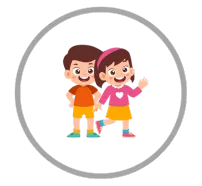Myopia Management Explained
Effective Eye Exercises for Myopia
FSDAVCFEBFEVSDDVFSD
FSDAVCFEBFEVSDDVFSD
FSDAVCFEBFEVSDDVFSD
Can Eye Exercises Help With Myopia Management?
Myopia, or nearsightedness, is a widespread vision condition where distant objects appear blurry. Recently, the idea of using eye exercises as part of a myopia management plan has gained attention.
Myopia, or nearsightedness, is a widespread vision condition where distant objects appear blurry. Recently, the idea of using eye exercises as part of a myopia management plan has gained attention.

These eye exercises aim to engage the eye muscles and train the eyes to shift focus more efficiently. While glasses and contact lenses remain standard treatments, incorporating exercises offers a potential way to support overall visual function.
The central question is whether eye exercises can truly help manage myopia. This article examines their possible role as a supportive method alongside conventional treatments.
Understanding Myopia: Causes and Effects
The Onset of Myopia
Myopia occurs when the eye's shape changes, causing light to focus in front of the retina rather than directly on it. This leads to blurry distance vision. Genetic factors, prolonged screen use, and environmental conditions are commonly associated with its development.
Impacts on Daily Life
People with myopia often need corrective lenses for daily activities like driving or watching TV. In some cases, myopia can worsen over time, resulting in stronger prescriptions and an increased risk of complications such as glaucoma or retinal detachment.
Traditional Myopia Management
Typically, myopia is addressed with eyeglasses or contact lenses that adjust how light enters the eye. These solutions restore clearer vision. Recently, eye exercises have been explored as a supplementary tool to potentially improve focus and reduce eye strain.
Exploring Eye Exercises for Myopia
Eye exercises for myopia involve routines designed to strengthen the eyes and improve focus. Though they aren’t a cure, they are considered by some as helpful for reducing strain and supporting better eye function.
Focus Shifting: involves moving your focus between nearby and distant objects. This activity may help increase the eye’s focusing agility over time by training the muscles to adjust more smoothly.
Palming: is done by rubbing your hands together and placing them gently over closed eyes. The warmth and darkness can offer relaxation and relief from screen related fatigue.
Figure of Eight: requires imagining a large figure eight on the floor and slowly tracing it with your eyes. This movement can help maintain the eyes’ tracking and coordination abilities.
Near and Far Focusing: involves looking at your thumb held at arm’s length and then focusing on a distant object. Alternating between the two helps keep the eye muscles active.
20-20-20 Rule: encourages taking a break every 20 minutes to look at something 20 feet away for 20 seconds. It’s a simple way to prevent fatigue during extended near work sessions.
Scientific Evidence: Do Eye Exercises Work?
The question of whether eye exercises make a significant difference in managing myopia has produced mixed responses from research. Here's a closer look at the evidence.
Limited Impact on Myopia Progression:
Most research shows that while eye exercises can help reduce eye fatigue, they do not significantly slow the progression of myopia. Their impact tends to be limited when it comes to structural changes in the eye.
Benefits for Eye Strain:
Eye exercises are more effective at easing symptoms related to visual fatigue. People who read, work on computers, or perform close-up tasks often find relief from regular breaks and simple focusing exercises.
No Replacement for Traditional Methods:
Experts agree that while eye exercises can be beneficial, they should only be used to complement—not replace—corrective eyewear. Glasses and contact lenses are better for Myopia and remain the most reliable options for correcting vision.
Further Research Needed:
There’s still much to learn about how eye exercises affect vision health long term. Current evidence doesn’t support them as a main strategy for managing myopia, but research is ongoing.
Holistic Approach to Eye Health:
Eye health is best supported with a well-rounded routine that includes regular exams, good lighting during reading or screen time, and healthy visual habits. Exercises may play a small part in this broader strategy.
Integrating Eye Exercises into Myopia Management
Incorporating eye exercises into a daily routine may help relieve visual stress and support better focus when used with standard treatments. Here’s how they can fit into your care plan.
Complementary to Corrective Lenses:
Corrective lenses are necessary for clear vision, but exercises may help reduce discomfort from prolonged use. Used together, they offer a more balanced approach to managing symptoms.
Part of a Holistic Eye Health Routine:
Adding eye exercises to your wellness habits—like good lighting, healthy nutrition, and regular check-ups—can help maintain comfort and reduce fatigue from frequent close-up tasks.
During Breaks from Screen Time:
For those who spend long hours at a computer or reading, doing short eye exercises during breaks can be helpful. Practicing the 20-20-20 rule regularly may offer noticeable relief.
Incorporation into Daily Life:
Because eye exercises require no special tools, they’re easy to integrate into daily routines at home or work. The key is being consistent and making them part of your day.
Consultation with Eye Care Professionals:
Before starting any eye exercise routine, it’s important to check with an eye care provider. They can assess your specific needs and recommend exercises that are both safe and effective.
Consultation with Eye Care Professionals
When thinking about eye exercises as part of your myopia care plan, professional guidance is essential. Here’s why it matters.
Professional Assessment: An eye doctor can evaluate your current vision and determine whether exercises are appropriate for your situation. They’ll also identify any underlying issues that need attention.
Tailored Advice: Based on your visual needs, a specialist can recommend specific exercises and advise how often to perform them. Personalizing your approach improves both safety and results.
Monitoring Progress: Routine check-ups help track whether exercises are making a difference and allow for adjustments. This ensures you’re getting the most benefit from your routine.
Integrating Treatments: Your provider can help combine exercises with other treatments like contact lenses or specialty options such as orthokeratology to create a more complete care plan.
Addressing Underlying Issues: Symptoms of myopia might sometimes overlap with other conditions. An eye care professional can help identify what’s really going on and provide the right treatment approach.
Getting expert advice ensures that your eye exercise plan is appropriate and effective. Working with a professional gives you confidence that your care is on the right path.

Contact Info
Hours of Operation
Mon - Fri | 9:00 AM - 5:00 PM
Sat - Sun | Closed
Holiday Hours: We are closed for the following holidays: New Years Day, Memorial Day, Independence Day, Labor Day, Thanksgiving Day, Christmas Day
© 2026 Kleinwood Vision. All rights Reserved.


